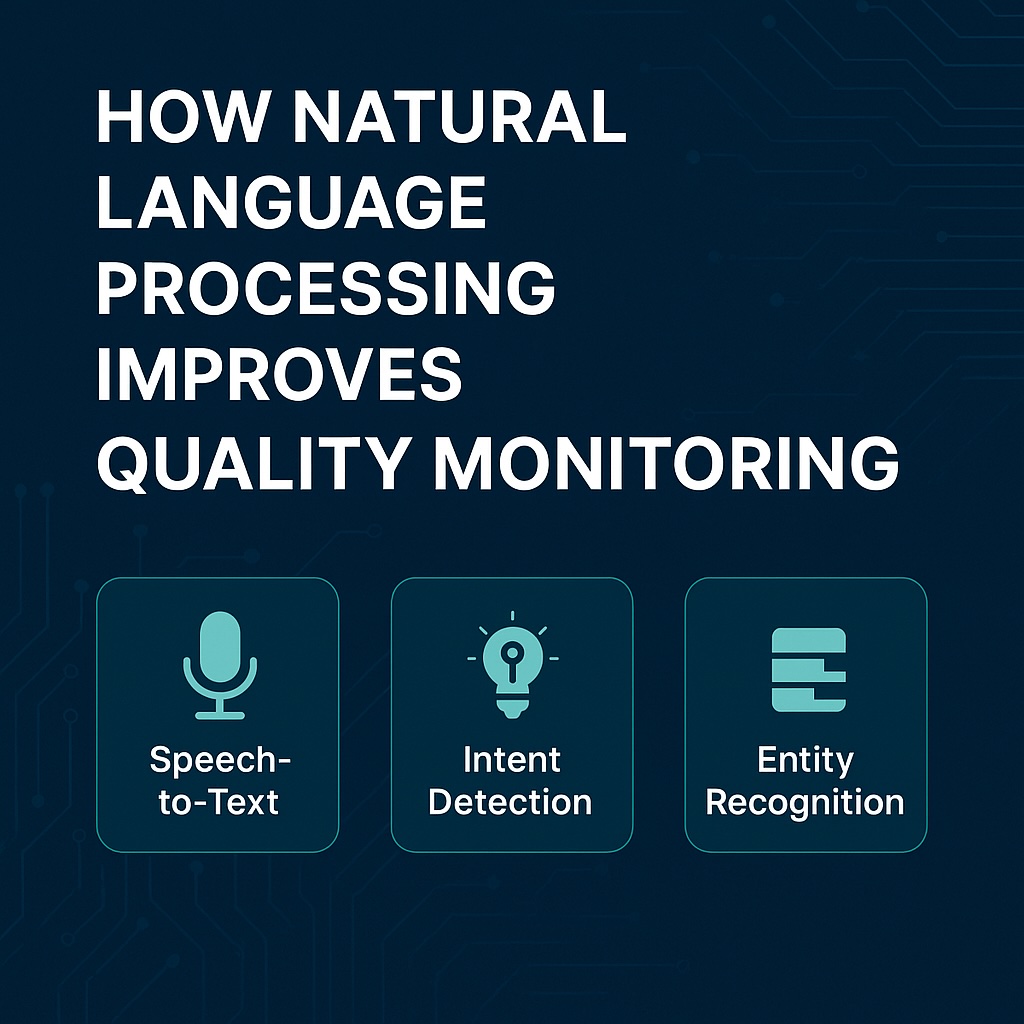
How Natural Language Processing Improves Quality Monitoring
🧠 What is NLP in Quality Monitoring?
Natural Language Processing (NLP) is a branch of artificial intelligence that allows machines to understand and interpret human language.
In Quality Monitoring, NLP models analyze support conversations — whether written or spoken — to extract meaning, detect sentiment, and evaluate quality criteria.
Instead of relying on manual audits of a few interactions, NLP allows you to evaluate 100% of conversations automatically, ensuring no trend or issue goes unnoticed.
🎙️ Step 1: Speech-to-Text — Turning Conversations into Data
For voice channels, everything starts with Speech-to-Text (STT).
Modern STT models (like Whisper, Google Speech API, or Deepgram) transcribe phone calls with remarkable accuracy, even across accents and noisy environments.
A good transcription system does more than convert sound into words — it identifies speakers, timestamps, and pauses, making it possible to analyze real conversation flow.
Example:
“I’ve been waiting for my delivery for two weeks” → [Customer frustration + Delivery issue]
This layer of precision is critical because the accuracy of the entire NLP pipeline depends on it.
💬 Step 2: Intent Detection — Understanding the “Why”
Once text is available, intent detection models identify the purpose behind each message or sentence.
Was the customer asking for information, reporting an issue, or expressing dissatisfaction?
Was the agent reassuring, redirecting, or closing the conversation too early?
By detecting intents, NLP reveals why customers reach out and how agents respond.
This understanding is what turns unstructured data into actionable insights.
Example intents:
- “Where is my refund?” → Refund inquiry
- “I can’t log into my account” → Access issue
- “Thank you, you’ve been really helpful” → Positive closure
Tracking the evolution of these intents over time helps identify recurring issues or emerging friction points.
🧩 Step 3: Entity Recognition — Capturing the Details that Matter
Named Entity Recognition (NER) takes NLP one level deeper by identifying key pieces of information within a sentence — product names, regions, delivery partners, or error codes.
This enables granular reporting without manual tagging.
For example, NLP can automatically recognize mentions of specific carriers, stores, or platforms, allowing performance tracking by entity.
Example:
“DPD lost my parcel again” → {Carrier: DPD} + {Issue: Lost parcel} + {Sentiment: Negative}
This capability allows managers to move from generic insights (“delivery issues”) to precise accountability (“DPD issues increased by 25% in the South region”).
📊 From Raw Text to Real Insights
When combined, these NLP layers transform raw conversations into structured, analyzable data:
- Speech-to-Text converts audio into searchable text.
- Intent Detection explains the purpose of each interaction.
- Entity Recognition provides context and granularity.
Together, they enable real-time dashboards showing trends by theme, sentiment, and agent performance — automatically.
This means QA teams can finally spend time acting on insights instead of finding them.
🚀 Beyond Monitoring: Predictive Quality & Coaching
Advanced NLP systems go beyond simple tagging.
They use machine learning models to detect anomalies, predict dissatisfaction, and even recommend coaching topics for agents.
For example:
- Detecting recurring frustration before it escalates.
- Identifying agents who struggle with empathy or call control.
- Automatically surfacing best practices from high-performing interactions.
NLP turns quality monitoring into a continuous feedback loop — improving both customer experience and team performance.




